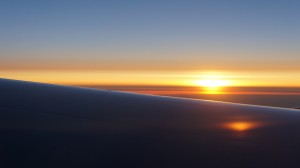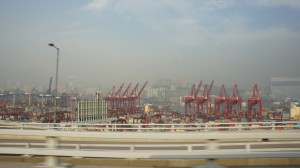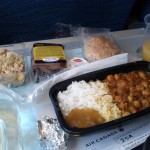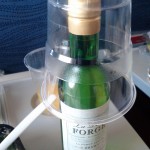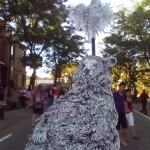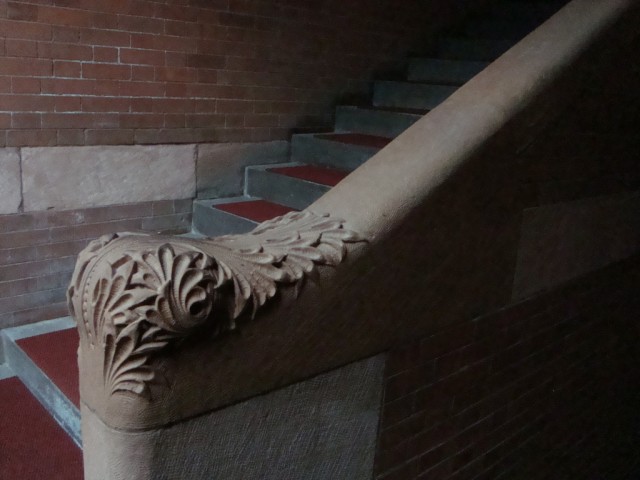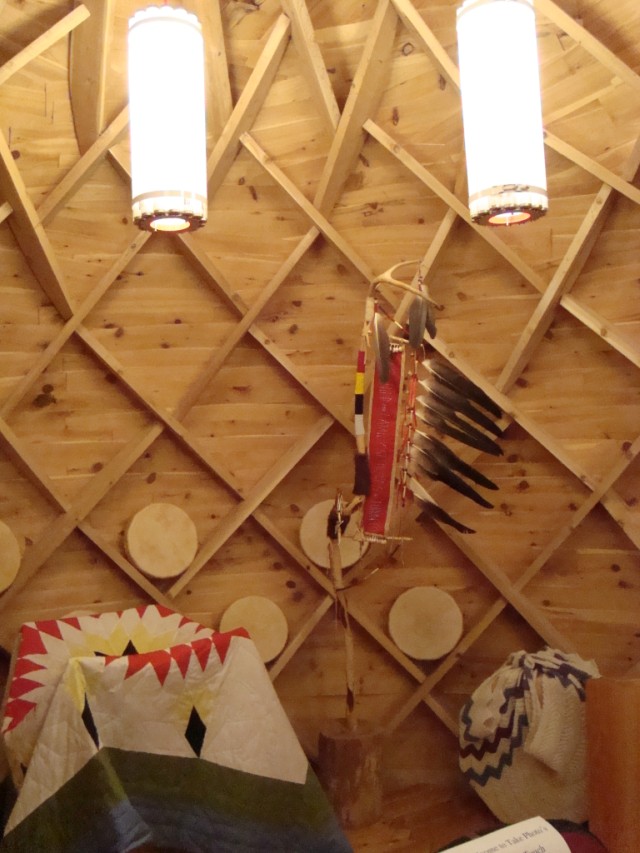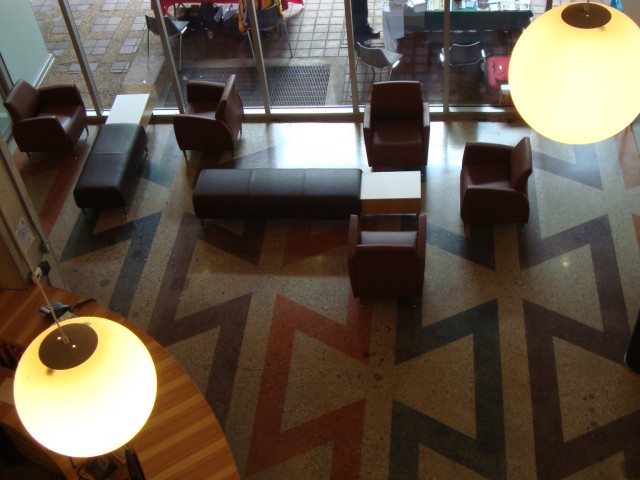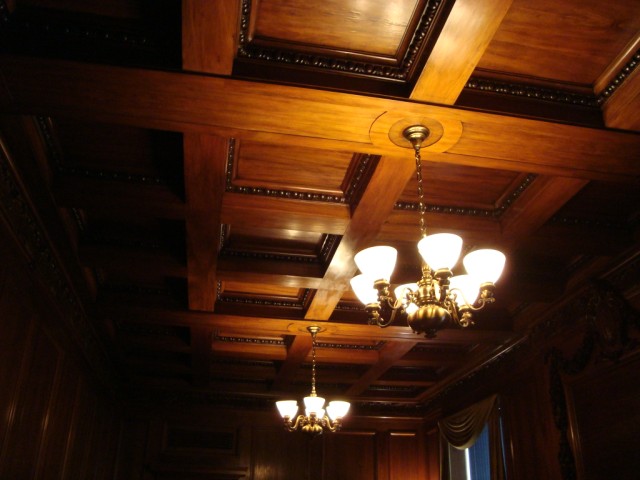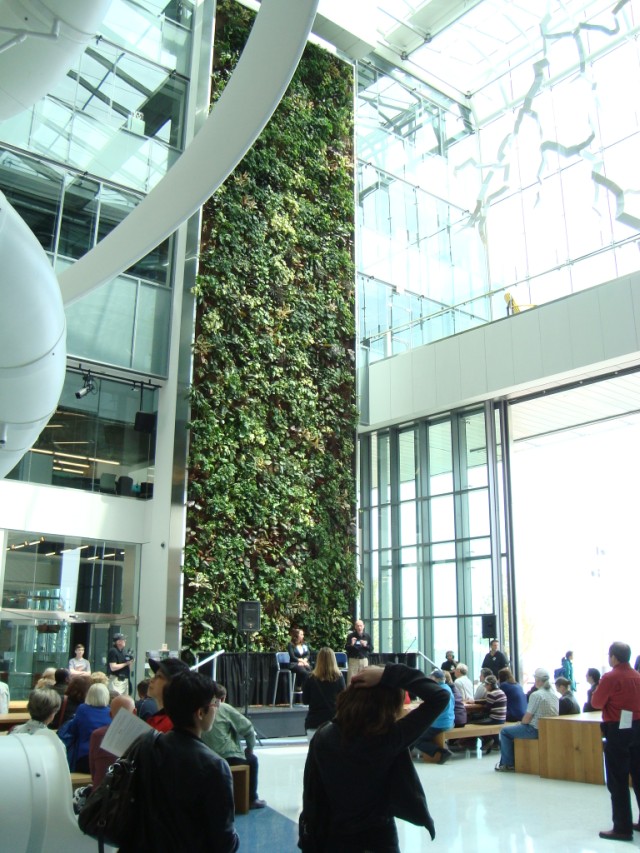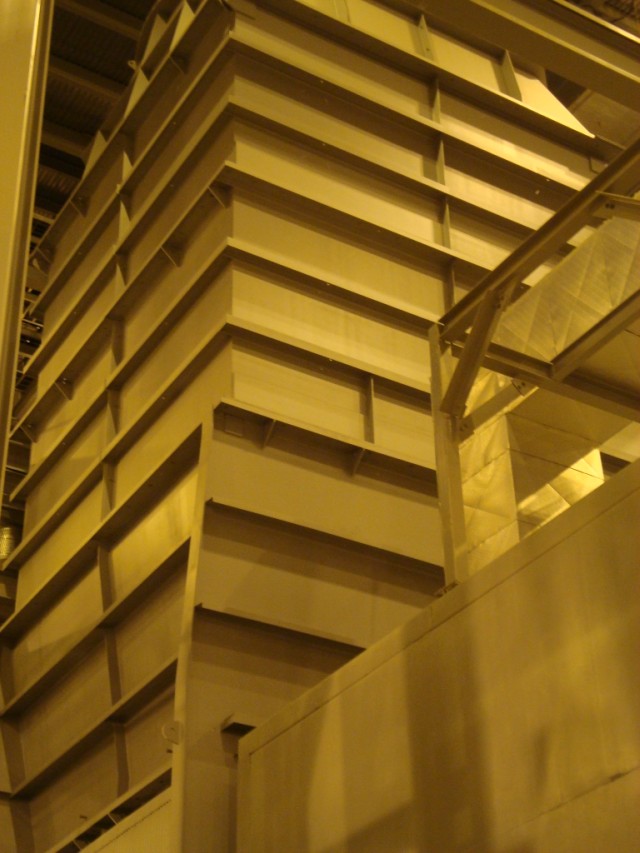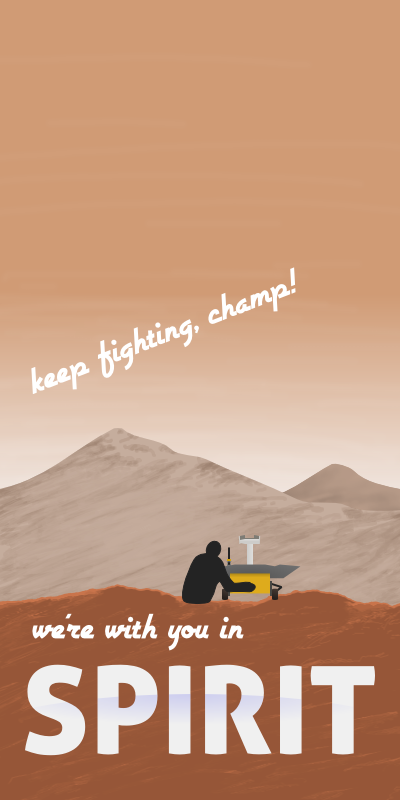-Double vegetarian lunch is a great thing, especially the sweet potato quiche
-They’ll probably keep sticking me on old Boeings but Qantas’ A380s are magnificent machines, so obviously bigger than their neighbours
-Trying to avoid upgrading the entertainment systems by using iPads will only work if they aren’t gross and the experience is solid. Frequent service and the custom UI (hindered by Apple’s programming walls) makes Q Streaming a bit unpleasant.
Biking up that hill
 After a weekend of drinking and concerts (plus the opening park party for a pride festival and a street festival for the lunar new year) it was time to recover outside the city with a bike ride to a few of the Yarra Valley’s wineries. At 33° and humid it was also very much not the day for serious exertion, but with wine tasting and country roads calling, there was no way not to go.
After a weekend of drinking and concerts (plus the opening park party for a pride festival and a street festival for the lunar new year) it was time to recover outside the city with a bike ride to a few of the Yarra Valley’s wineries. At 33° and humid it was also very much not the day for serious exertion, but with wine tasting and country roads calling, there was no way not to go.
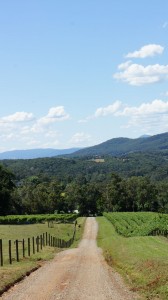
I sampled two of my favourite wines types, late harvest Riesling and port, and they were fantastic. Cycling up a steep dirt road may have contributed to my enjoyment.
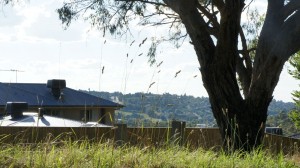 On the way back the late afternoon sun gave the forest a fantasy glow, especially where the path was bracketed by rock faces where the old railway had been dug in to the hills. The sense of going through a land out of time was reinforced by the many piles of horse poop that had to be dodged, left by the equestrian school.
On the way back the late afternoon sun gave the forest a fantasy glow, especially where the path was bracketed by rock faces where the old railway had been dug in to the hills. The sense of going through a land out of time was reinforced by the many piles of horse poop that had to be dodged, left by the equestrian school.
The strait, the ocean, the river
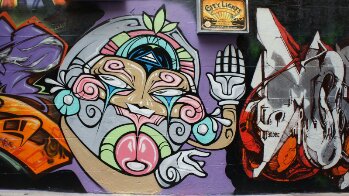
Graffiti is legal in designated alleys, but carrying spray bottles in public is illegal.
We’re in a suburb (read: neighbourhood) called Fitzroy which is awash in great cafes and restaurants; small shops selling vintage clothes and furniture; larger shops selling overpriced plastic and metal things; and surprisingly large shops selling much smaller clothing. Thanks to sale prices, I’m now the owner of a piece of much smaller clothing; I’ve been assured that the loss of flexibility in my knees will get worked away.
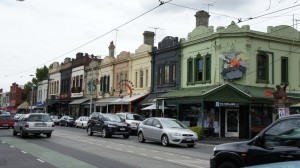 Hipster streets can be expected to have excellent print design, but I’ve been surprised by the number of places around here with great Googie signage. There are also a surprising number of spectacular Art Deco buildings and Beaux-Arts arcades, as though the International school skipped the city entirely and left it primed for some top-notch PoMo.
Hipster streets can be expected to have excellent print design, but I’ve been surprised by the number of places around here with great Googie signage. There are also a surprising number of spectacular Art Deco buildings and Beaux-Arts arcades, as though the International school skipped the city entirely and left it primed for some top-notch PoMo.
There’s a lot of great city to experience here and I’ll try to keep updating with more of it!
I like Australia much less now that it’s over 30 degrees
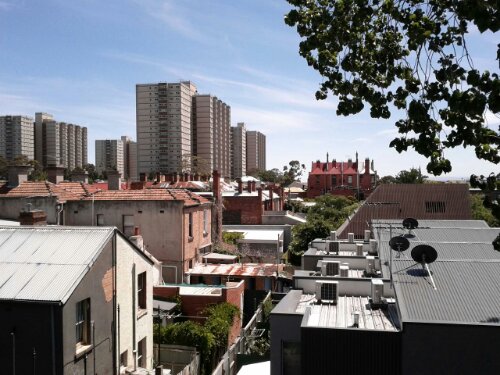

A long flight, a longer horizon
I’m in Hong Kong with a day to see and explore the old neighbourhood before hopping on a plane to Melbourne. I didn’t get much sleep on the plane, even after two glasses of wine, which is actually doing wonders for my jetlag.
I haven’t been here in 8 years and it feels like my sentimental side is taking a firm hold. I went to visit my grandmother’s old apartment building, back when she was (alive, obviously, and) still living here, near the complex in which I grew up. On the way, I stumbled on what I think is the playground at which I played giant plastic tic-tac-toe, and the city square on which I used to watch people do tai chi in the morning. I’m hoping to take a look around the old shopping plaza today, popping in to the wet market for that butcher smell.
My past direct flights to Hong Kong took me over Korea and Japan, and watching the lights of the megalopoli pass was one of my favourite parts of the route. This time we flew over Russia and China (originally routed to be straight over Beijing) which meant two polar twilights. The colour, the feeling, of the sky is just different at high latitudes, and every peek snuck out the window bathed my row in pink and orange.
I’d forgotten the scale of things in Hong Kong. There are plenty of pictures of the nighttime downtown, but really they just evoke an image of a very, very big city. Here’s the port of Hong Kong. You can see about part of a quarter of it. Currently the third busiest port in the world, driving by it has a Burtynskyan appreciation for the sheer volume of modern international commerce. I was also struck by the giant apartment complexes: dozens of floors of thin building, a handful all wedged together. When I was here as a kid, living on the island, I I developed an image of Hong Kong as a tightly packed, slightly dusty city, buildings 5 or 10 stories high with nary an inch between them. The suburbs where I grew up were more similar, but they feel different from the road. I’ve seen these before but it feels like there are a lot more of them, and now I’m consciously trying to square these different ideas of the city and hopefully I’ll be able to take a walk around a couple more of these developments in the future.
Okay, time to get ready to start the day and head onwards to Melbourne!
- (Insert joke about airplane food) but actually it was delicious.
- An hour of sleep in a bottle.
- Sunrise over Russia
- Kwai Sing Container Terminals
- My maternal grandmother’s old apartment building
Bay Area: A Day in Hamilton for Supercrawl
I’ve only ever known Hamilton as rusty industrial hulks and uninspired 60’s skyscrapers passed on the way to Niagara.
Warning: this was an impulse trip. Crappy phonecam photos ahead.
The Art
James St. North is a centre of Hamilton’s art scene and hosts a monthly art (and restaurant) crawl of which Supercrawl is just the biggest iteration. Large parts of the street were blocked off to form canvasses on which to paint and draw, which people (and especially children; it’s always children) took to with gusto. A harpist set herself up in front of the armoury and across from a brass band; it was beautiful, but could also have been a statement on the quixotic adventure of interventionism and/or pacifism.
The street is filled with art galleries and art centres on the ground floors of beautiful three story buildings in a Bloorish/Dundasy way. I wanted to visit and explore them because I’m a sucker for galleries with huge lineups, but then there was the music.
The Music
Churches are designed to make sounds like Bruce Peninsula‘s awesome. I mean that in the traditional sense – the high ceilings, the tall windows, the acoustics are all designed to strike awe in the pews with the human voice. 10 metres of soaring, sun-punctured walls should be in their riders; Steamroller especially can really fill the space. They’re now in the leadup to the release of their new EP Open Flame on October 4th. From what I’ve heard, Salesman (above) is indicative of their new sound – more gospel, less drums, and making full use of the voices of Daniela Gesundheit (Snowblink), Misha Bower and Tamara Lindeman (The Weather Station).
The first time I ever saw Basia Bulat was, coincidentally, opening for Ohbijou with Bruce Peninsula (and the second time was at a church, which also works wonderfully with her music). For her show at Supercrawl, she brought along the Hamilton Philharmonic Orchestra, and arrangements by Owen Pallett. There were some off notes, like replacing the violin and snare drum section in Pilgriming Vine with string, brass and woodwind sections playing in turn. For the most part, it was an interesting take on familiar and well loved songs (like Run, above from YouTuber sreinisiv) but at its best, as in closer I Was a Daughter, the minimalizing instincts obvious in both come out in a seductive show of smoky French jazz and modernism; voice, metal, wood and string controlled and working off each other to stir the soul.
The City
Wandering King St. to find something to eat, I met Carlos, the owner of the ‘Moroccan-Brazillian’ Barbarossa Café. Sadly, for both my appetite and my palate, he wasn’t serving food but he was happy to share his experiences as a Toronto ex-pat. To him, Hamilton is a diamond-in-the-rough, gorgeous Beaux Arts and Deco pieces (there’s a reason Wikipedia’s History of Hamilton, Ontario article ends at the war) rejected by the local nouveau riche but snapped up by Torontonians looking for a nearby compromise between small town and urbane. It is also a very class-aware city.
The small part of the city I saw (King East and James North) had massive bingo halls, little Chinese and Latin American restaurants, burger joints and sandwich shops, fast food chains, and urban eateries all together. Given the spectrum of upkeep on display, it’s hard to say that it’s a divided city, at least physically. It does seem to be gentrifying though I’m not sure whether as an extreme form of Toronto’s westward movement or as a native renaissance. It’s a 50 minute bus trip, and it has a better art scene than most of the suburbs so it wouldn’t be an unreasonable new frontier, but GO doesn’t seem to be interested in making it happen.
Let’s GO to Hamilton
Two things about transit service stop Hamilton from being a nice alternative after Bohemian Embassy takes a real hold on Queen and they open up a successor in Parkdale. First, tickets are $9.50 each way, or just under four tokens. Second, the last bus out of Hamilton is at 11:30 and the last bus out of Toronto is at 12:30. Any suburbanite can tell you that catching the last train is a drag, and the TTC gives you two extra hours. I’d considered staying for the Broken Social Scene set and ride out the night with Olenka and the Autumn Lovers and the most accommodating late night diner I could find, but I settled for a Kevin Drew walk-on with J. Mascis instead. Between the beautiful architecture, cheap property, and ample post-secondaries, Hamilton has plenty going for it as an art scene. It’d just be nice if it was easier to get to.

Doors Open 2011
Thomas Fisher Rare Books Library

Canadian Blood Services
Native Child and Family Services
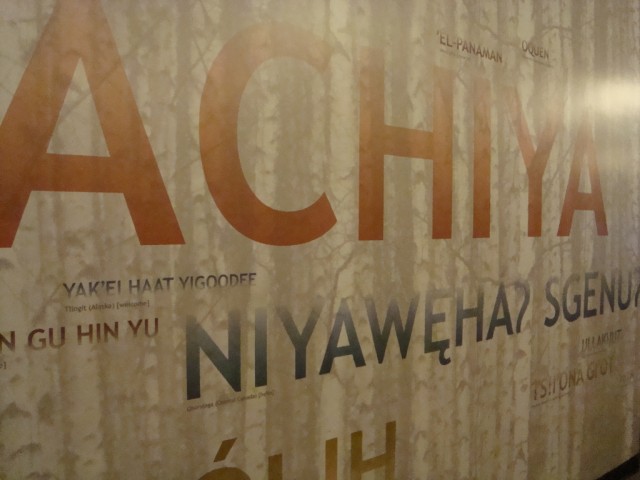
“a welcome wall in a number of Native languages. The larger type represents those whose traditional territories are in and around Toronto”
Le Meridien King Edward – Crystal Ballroom
Toronto Harbour Commission
Redpath Sugar Refinery
Corus Quay
Portlands Energy Centre

Another World
High school was a heady time for me. For the first time, I was out of a Catholic environment, I had friends of a variety of backgrounds, I was kissing girl and studying science. And I was reading Common Dreams every chance I got.
Having grown up on The Toronto Star (centre-left and a bit wanting in international news), reading Common Dreams was just as much a part of becoming an adult as calculus and hormones. Though I read about the cloistered meetings of the World Economic Forum in the Star, it was Common Dreams that introduced me to its more open alternative, the World Social Forum.
It was, and is, an exciting idea: activists and thinkers dedicated to a world of justice and democracy meeting in a city in Brazil that was trying to live the idea. I’ve tried to live that idea too (my only real credit, beyond eating local/fair trade when I can, is my total use of Free/Open Source Software for my work. Please give Ubuntu a try!) because I believed in that WSF slogan – Another World is Possible!.
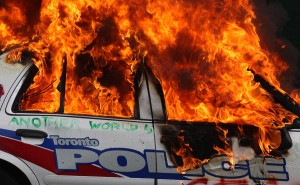
TORONTO STAR/STEVE RUSSELL - The first of two cruisers burns on Queen Street West near Spadina, two damaged police cars were left on the street.
I think that’s why I’ve been haunted by that burning police cruiser. The fire doesn’t bother me as much as the writing scrawled in green, because it makes me ask: just what is this other world? Is it acceptable to destroy community property there? Are our possible worlds limited to those in which violence is an excusable response to those who are disagreeable?
What violence, what excuses? Well, let’s start with that one – it’s not that serious because it was just property. Ignore for the moment that there were people in some of those properties. If smashing store windows doesn’t sound like violence, imagine they were windows to abortion clinics, gay bars, newspaper offices, or constituency offices. The violence is not just in breaking windows, but in making the city feel unsafe.
Then the excuse that makes the thought exercise necessary – the attacks were targeted at mega-corporations that do harm, and can afford to make repairs. I doubt the Bay/College medical offices and the TTC are part of a vast global-corporatist conspiracy to enslave the people, but if they are they’ve certainly learnt their lesson. But how does that hold up as an excuse? Can a better world only rise up after Tim’s, Bell, and Swiss Chalet have been annihilated?
Finally, it’s important to say that these are the acts of a tiny, violent minority, which is true. But I’ve read on Facebook more times than I care to remember that the media should be writing on the issues raised instead, or that this isn’t really reprehensible because it’s targeted at evil corporations, and the police ‘planted’ their cars to be burnt.
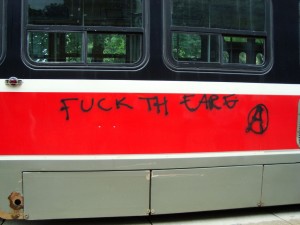
FUCK THE FARE because in a communal society, we'll engineer power plants, drive streetcars and lay track without the violent coercion of the capitalist regime!
On Saturday, I tried to stop a couple of guys who were doodling on parked streetcars with their markers. They had already been spray painted and scratched so it was really a moot point, but I love my city and my transit system, and I wasn’t about to stand by while a streetcar was defaced. I ask them to stop, with a reminder that the clean up cost would be borne by the riders. One said, “I ride the streetcar too. I just don’t pay for it,” and they left.
I don’t know if these people had broken any windows or destroyed any police cars, but it feels to me that they come from the same place. Apathy, incivility, self-righteousness, the kinds of attitudes that eat society away. That’s always going to be a story, and that can’t be the foundation for a world built on community. There were thousands of people this weekend trying to make legitimate points, or at least earnestly trying to make the world a better place to live. Talk about them, but spare a sentence to condemn the violence. Another world is possible.
Postscript
I should have written this on Saturday night, after I got home. I’d spent the entire day walking the streets, and I was unreservedly impressed with the professionalism of the police who didn’t lose their cool. I think some of those present found that frustrating because they took to chanting “We are peaceful; how ’bout you?” to the lines of cops bracketing smashed police cruisers, in which there was apparently still an officer. Even while I was eating dinner, it was reported that the police hadn’t used tear-gas, rubber bullets, pepper spray, or the water and sound cannons.
I was on the phone when I heard that pepper spray had been used against a protest at Queen’s Park, and mounted police had charged in. Later that night, I read Steve Paikin’s report that the police had arrested every person at a protest, and had beaten a reporter. The next morning, I read of more mass arrests at a protest outside the detention centre on Eastern Ave. Then heavy police presence at a Critical Mass ride far from the summit, and at a pray-in much further in the core. And then the four hour non-arrest at Queen and Spadina. Then, as people were released from detention, word of the poor conditions there.
Had I written this on Saturday, it would be an uncomplicated story. But maybe it still is. The actions of the police cannot be excused because few people were seriously hurt – the indiscriminate and unnecessary use of force makes the city feel unsafe and unjust. Nor can they be excused because they were targeted at radicals – they clearly were not, and even if they were, it is not criminal to be radical. Nor can they be excused because they were the actions of a minority of officers (hopefully acting off their own anxieties, and not orders from above). Violence is wrong no matter who perpetrates it. This weekend, it seems, nobody’s reasons were as good as they’d like to think.
Spirit Vigil
Yesterday, NASA announced that Spirit had missed a planned transmission. To date, Spirit (and its twin, Opportunity) have lasted more than 2150 martian days longer than the expected 90. Not just lasted, but thrived – originally planned to travel a single kilometre, Spirit logged 10 before becoming stuck in soft soil. After trying and failing to escape for half a year (earth years), NASA decided to give up on mobility and allowed Spirit to perform science. That was two months ago. Today, it seems to have shut down to charge its batteries.
These two little rovers have lasted longer, seen more, done more than anybody ever expected, and have survived draining conditions. Their tenacity has earned them empathy and celebration. In tribute to Spirit, and in the hope it will revive and continue to contribute to our understanding of Mars, I wanted to offer up my best wishes to the rovers, and to all the people at NASA who keep them going. Rock on, Spirit!
The Vegetarian’s Dilemma
I was trying to finish Michael Pollan’s The Omnivore’s Dilemma last night and, while reading the chapter on vegetarianism, I was stopped by a moral question. The set up is based on Pollan’s summary of an ethical argument against eating meat:
- People vary wildly; some are cuter, funnier, smarter, etc.
- Smarter people don’t (as a matter of course) have the right to exploit those not as smart
- Any moral argument for meat-eating that relies on human ‘superiority’ runs in to #2. Any argument that relies on a ‘difference in kind’ is speciesist (which might sound fine now, but might be as hard to justify as racism to your grandkids and their pet space-capybara).
“Okay, great,” say the vegetarians between spoonfuls of granola, “what’s the problem?” Pollan goes on to talk about a population of feral pigs on Santa Cruz Island, whose delectable piglets attracted a now-booming population of golden eagles who waltzed in to the vacuum left by the DDT-extinction of their cousins, the bald eagle. Bald eagles (apparently, I’m going by Pollan here) mostly dine on seafood; golden eagles are huge and scary and dine on land animals like piglets… and the slower, smaller, critically endangered island fox.
Well, the foxes and bald eagles were there first, and the foxes are critically endangered which means, to those not familiar with the IUCN classification, someone will shoot you in the face for sneezing in its direction because it is more important than you. Well they are: there are only 125 Santa Cruz foxes. And that’s why there are snipers hunting down the pigs and trapping the golden eagles – we have lots of pigs.
Sounds reasonable, right? Well, let’s do the same thing with cats. In Last Chance to See, Douglas Adams’ and Mark Carwardine’s travelogue of endangered species, is the story of a program to protect the kakapo. Isolated, New Zealand had lots of bizarre birds happily living on the ground (this being New Zealand, I use the term in a way unfamiliar to Southern Ontarians; there are lots of fjords and sundry cliffs) because there weren’t many other animals there – even the Maori were fairly recent. More recent still were the European sailors, and the animals they brought with them: rats, possums, and, yes, cats, all of whom would quite enjoy a meal of slow, fat bird or its eggs and were quite able to get them. Thus the government of New Zealand, killed off all the rats and possums and cats over a few islands, and brought every kakapo (and other endangered island birds) they could find to live on them.
So that’s Fluffy – is that fine too? If it’s not, is it fine to leave these species to extinction? There aren’t that many of them, and a single pregnant cat and her offspring could probably get to them quite easily. If it is fine, then where do we draw that line? The komodo dragon lives on inhabited islands, and they are not good neighbours.
So here’s the point: if we believe in “animal rights,” do those rights belong to the individual (as do human rights) or the species? The ethical argument for veganism is that the individual animal has a right to live, and live freely. But then the morally consistent stand would be to support the pigs and the cats – Pollan recounts a Save the Pigs campaign which flew plane-trailed banners. On the other hand, domesticated animals only exist because we’ve bred them for captivity over millenia (or have we, as Pollan argues, grown together to a form of mutualism?) and wouldn’t exist otherwise. In fact, as long as they’re treated well, the life of a farm-raised chicken or cow is generally much more pleasant than a life in the wild spent scrounging for food and fearful of… foxes.
Half of Omnivore’s Dilemma is actually devoted to telling the story of just such a farm. On Polyface, it reads at length, cattle, chickens, pigs and grass formed an ecosystem that produced better beef, chicken, eggs, pork, and (via manure) vegetables. Let’s imagine a future where this is the norm – living on abundantly fertile and wide-open Ontario soil, this shouldn’t be hard. If the individual animal has a right to live, and live free, then this is still slavery, albeit a form of slavery some might choose over a cubicle farm, even if it ends in baconizing, as long as it includes a period of stud-ing. The alternative for us though, given the number of human mouths to feed, is a plant-only agriculture that relies on fossil-fuel fertilizers (still much reduced, given everything that goes in to corn and soy for animal feed). Other cities, in hillier climes, would have to continue to rely on intensive planting (and energy-intensive transportation) elsewhere. At our current technology and infrastructure, that’s a recipe for continued (maybe worsening) climate change, condemning huge numbers of species to stress and extinction.
I actually don’t have a dilemma – I’m happy to live in moral inconsistency if it lets me fawn over individual puppies and piglets, express disgust over Chinese supermarket fishtanks, and still choose to eat local fish in the Yukon (there were no local fish, due to overfishing in Alaska, so I enjoyed non-local asparagus parmesan on fettuccine instead). But there’s certainly an inconsistency there, and thus a question: Do animal rights belong to the individual or the species? If the individual, what do we do about re-nativization and sustainable food? If the group, is vegetarianism justifiable? Is liberalism?

